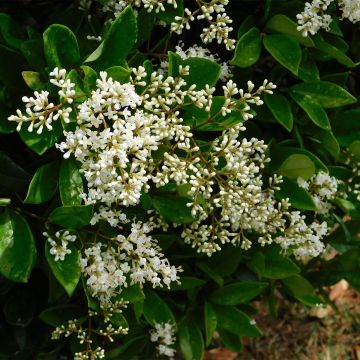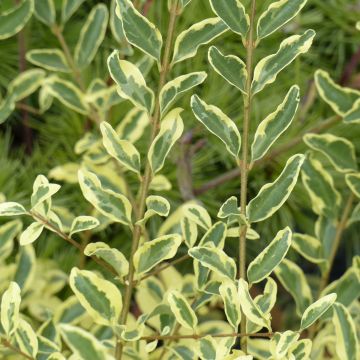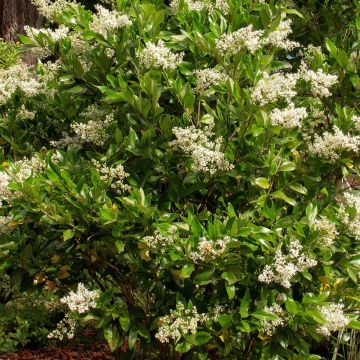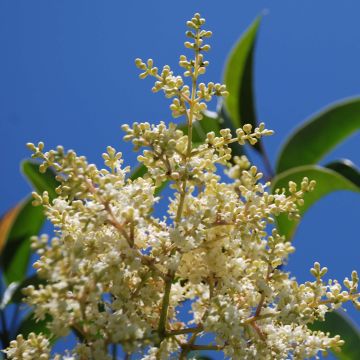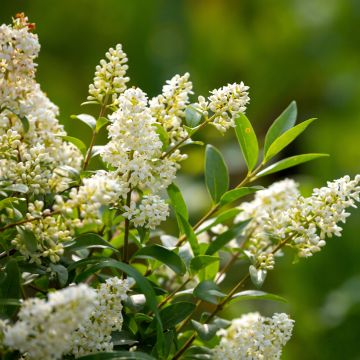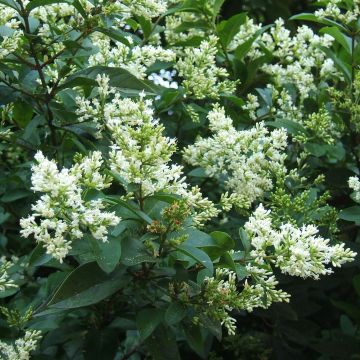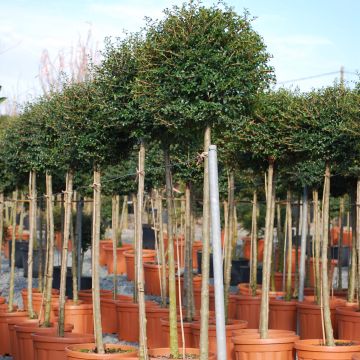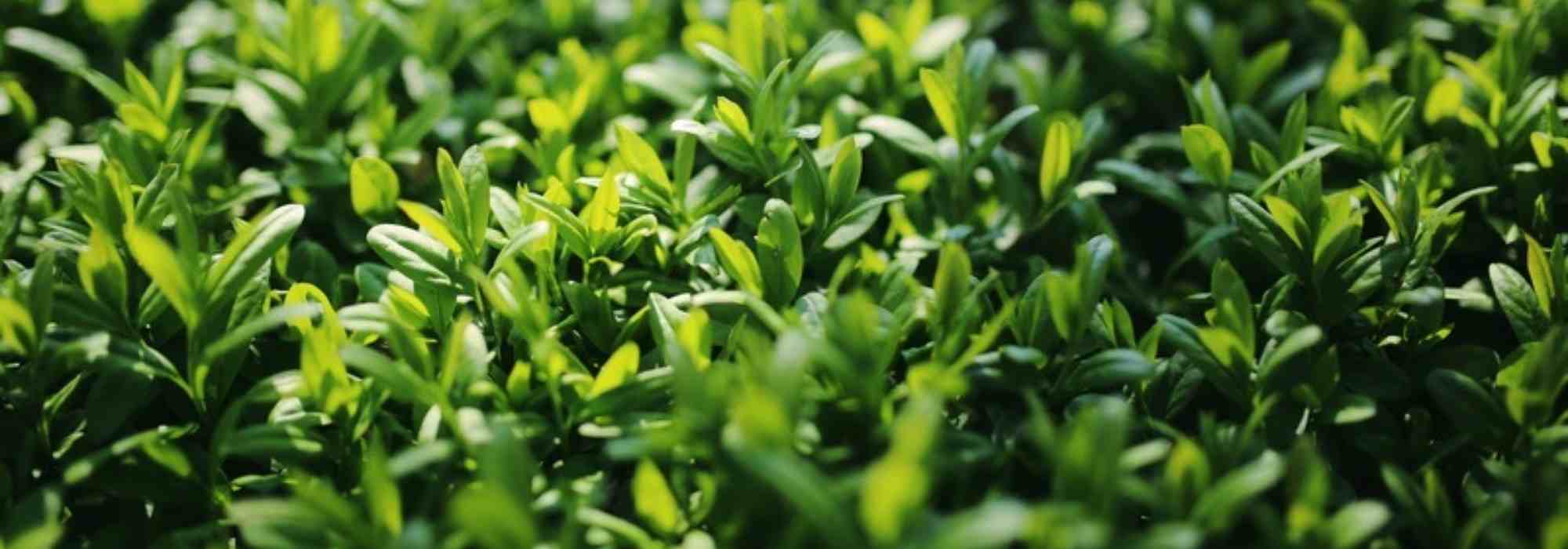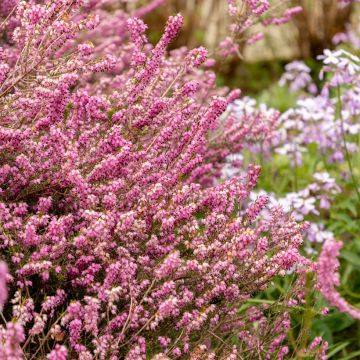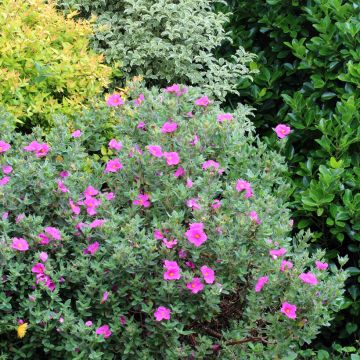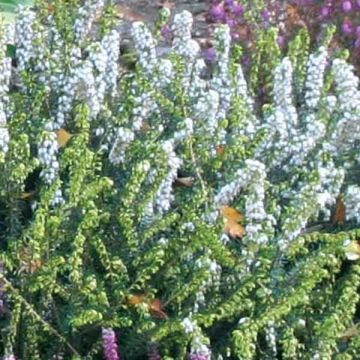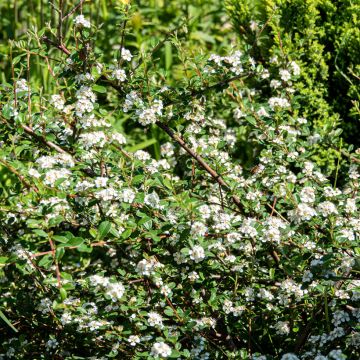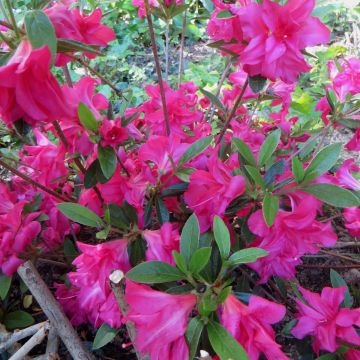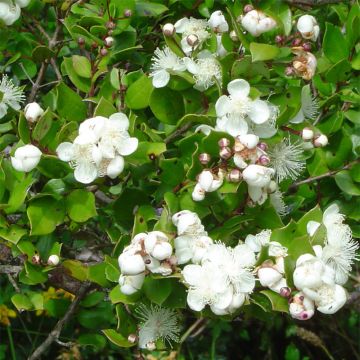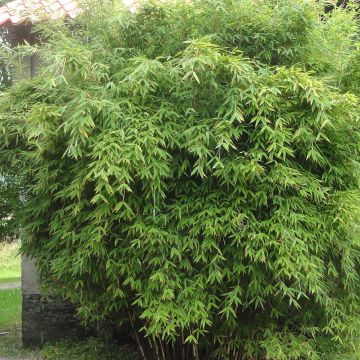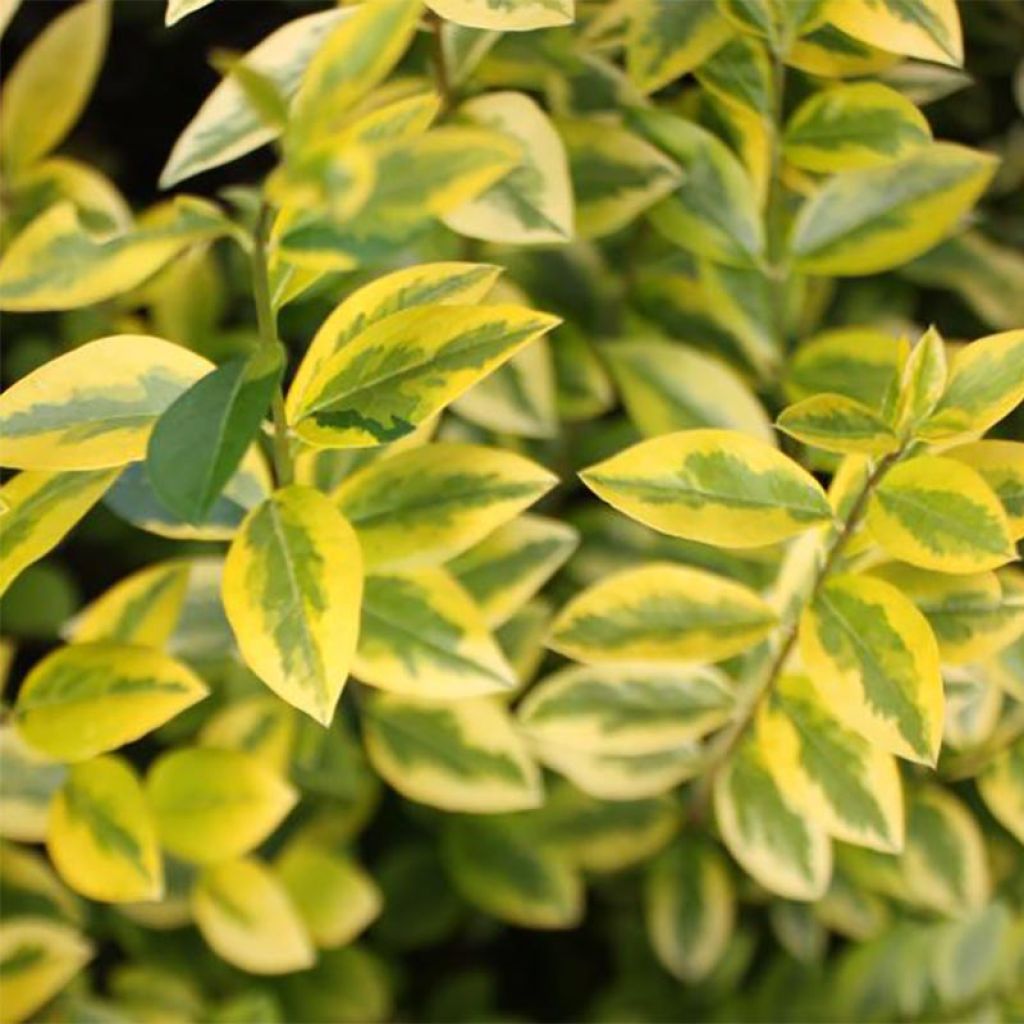

Golden Privet - Ligustrum ovalifolium Aureum
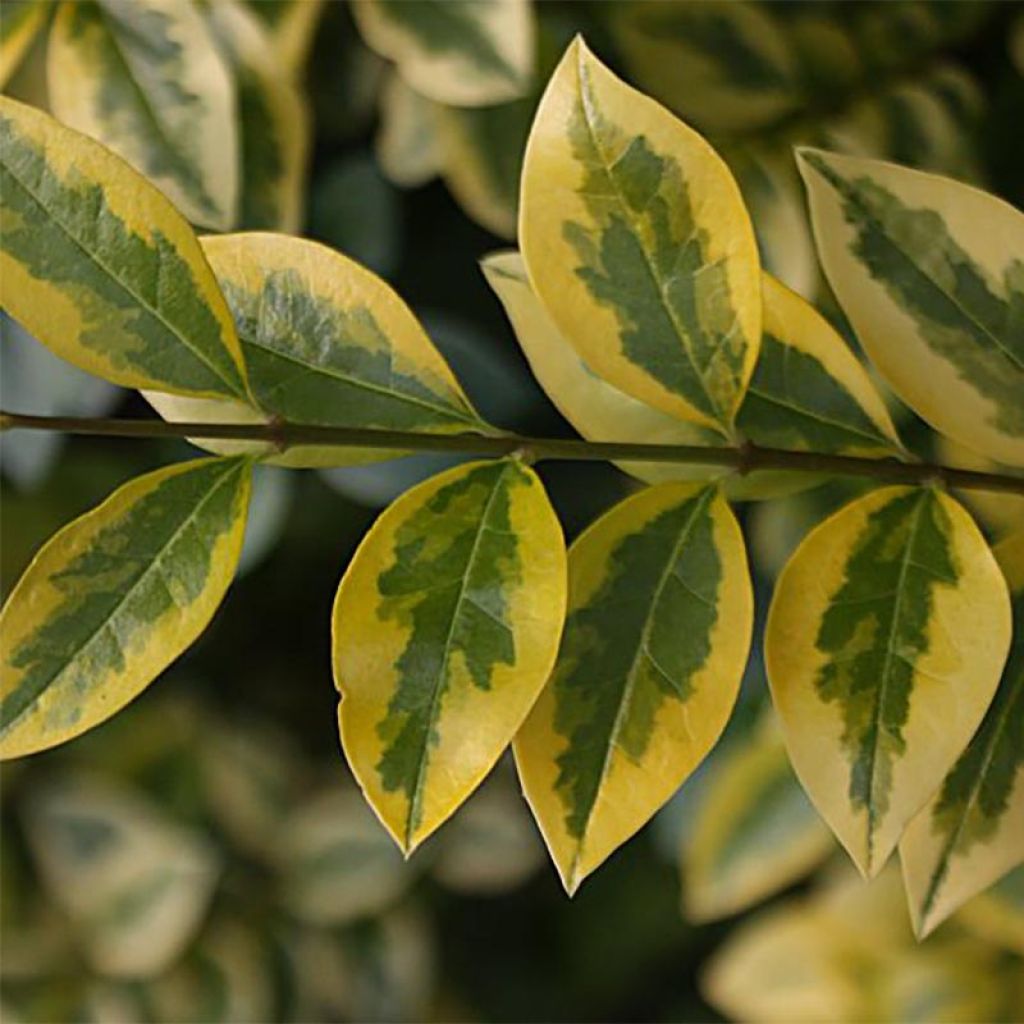

Golden Privet - Ligustrum ovalifolium Aureum
Golden Privet - Ligustrum ovalifolium Aureum
Ligustrum ovalifolium Aureum
Garden Privet, California Privet, Oval-leaf Privet
I am always very satisfied with my purchases. The young plants are of good quality, well packaged, and there was no damage. I recommend them.
isabelle65, 02/10/2025
Special offer!
Receive a €20 voucher for any order over €90 (excluding delivery costs, credit notes, and plastic-free options)!
1- Add your favorite plants to your cart.
2- Once you have reached €90, confirm your order (you can even choose the delivery date!).
3- As soon as your order is shipped, you will receive an email containing your voucher code, valid for 3 months (90 days).
Your voucher is unique and can only be used once, for any order with a minimum value of €20, excluding delivery costs.
Can be combined with other current offers, non-divisible and non-refundable.
Home or relay delivery (depending on size and destination)
Schedule delivery date,
and select date in basket
This plant carries a 24 months recovery warranty
More information
We guarantee the quality of our plants for a full growing cycle, and will replace at our expense any plant that fails to recover under normal climatic and planting conditions.


Would this plant suit my garden?
Set up your Plantfit profile →
Description
The Ligustrum ovalifolium 'Aureum', also known as Golden Privet, is an excellent hedge shrub, erect, vigorous and compact, with bright golden variegated foliage. It has white, scented summer flowers followed by black berries. Depending on your budget, the length of your hedge, your patience, and the time you can dedicate to gardening, different types of products are available to you.
- For an economical golden privet hedge, opt for 9 cm pots that can be planted all year round. The soil should be prepared carefully (thorough weeding, removal of all roots, planting trench) and it is preferable to place a tarpaulin at the base of the shrubs to limit the germination of weed seeds and avoid having to weed, while they establish themselves. Once established, they grow quickly and will soon catch up with their cultivated counterparts in pots. This is the most economical solution when it comes to creating a hedge of at least 10 m (32.8 ft) in length.
- For a fast-growing golden privet hedge, or to fill in an existing hedge, choose shrubs 2, 3 or even 10 litre pots. Potted shrubs can be planted all year round, except during periods of frost or heatwave. They should be planted in individual planting holes, like any other shrubs in the garden. While they make an immediate impact, they take a little longer to "get going" and will require more frequent and regular watering, especially when the summer is dry.
Respect the correct planting distance according to the size of your plant! Allow 60 cm (23.6 in) of space between each plant for shrubs in pots, 70 to 80 cm (31.5 in) for 2 or 3 litre pots, and 80 cm (31.5 in) to 1 m (3.3 ft) for pots up to 10 litres.
Originating in Japan, Ligustrum ovalifolium 'Aureum' is a medium-sized shrub with a bushy habit and erect, vigorous stems. It grows rapidly, measuring about 2 m (6.6 ft) in height with a width of 1.50 m (4.9ft). Its intensely branched foliage consists of glossy, narrow and ovate, lanceolate leaves, green with a broad golden margin, measuring between 3 and 7 cm (2.8 in) in length, and appearing very early in spring. In June-July, small cream-white, heavily-scented and melliferous flowers appear in panicles measuring 5 to 10 cm (3.9 in). After flowering, small spherical black berries appear in autumn, which persist for part of the winter. The leaves, flowers and fruit of the privet are toxic to humans and animals if ingested. Take care when pruning.
The golden privet is extremely hardy and very easy to grow, thriving in ordinary garden soil and sunny or semi-shaded positions. Its golden foliage will be brightest in full sun. In shaded positions, the leaves may tend to be more green than yellow.
With its very decorative foliage and compact and bushy habit, Ligustrum ovalifolium 'Aureum' can be planted in various ways.
It is one of the most decorative varieties for forming hedges and windbreaks, due to its green and yellow foliage, size, hardiness, very dense branching, and its high tolerance for repeated pruning. It is easily shaped, making it well-suited to the art of bonsai. It is also well-suited for topiary (in ball or other shapes), or even grown as a standard or half-standard and cultivated in pots. It will look good in combination with other trimmed shrubs with different forms and foliage, for a very graphic and minimalist decor.
It also works well when planted in groups, mass plantings, borders, rockeries, as free-standing specimens, or wild hedges.
It can be planted with other shrubs (Photinia, Eleagnus, St. John's Wort, Kerria japonica) and perennial plants (daylily, Verbena bonariansis, tree lupin), and by letting it grow freely it will create a lovely wild hedge full of flowers and beautiful foliage. The roots of the privet maybe harmful to any perennial plants planted at its base so leave a sufficiently large planting distance around it.
Properties:
Due to its heavily-scented pollen-laden melliferous flowers, this privet attracts and helps to preserve the bee population.
Its pollen can be allergenic for those people who are sensitive to it.
It has a very high resistance to pollution.
Golden Privet - Ligustrum ovalifolium Aureum in pictures
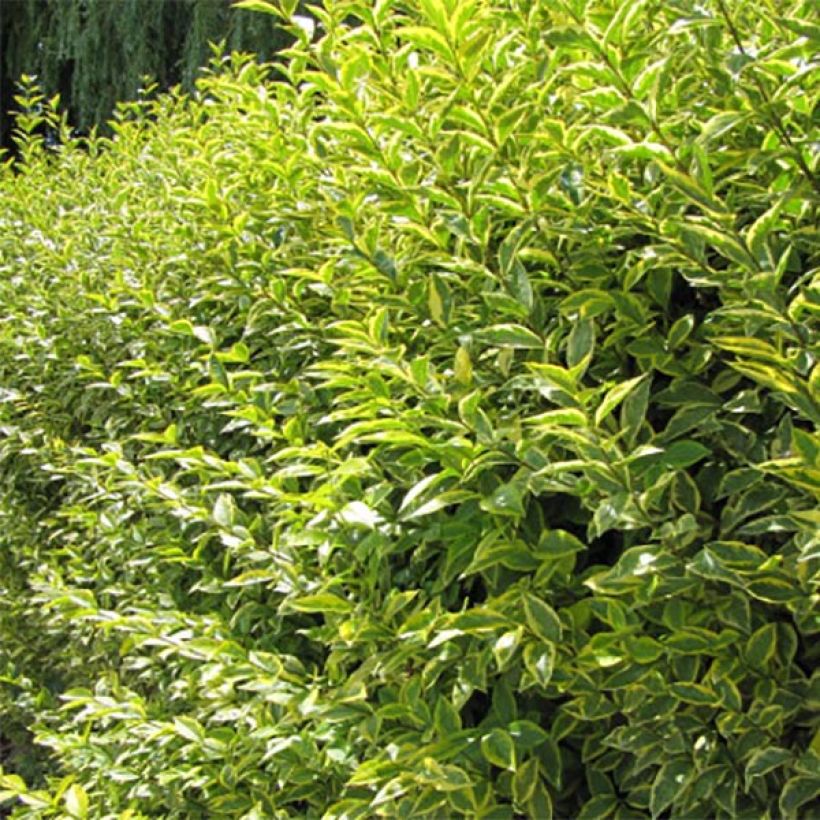

Plant habit
Flowering
Foliage
Botanical data
Ligustrum
ovalifolium
Aureum
Oleaceae
Garden Privet, California Privet, Oval-leaf Privet
Cultivar or hybrid
Other Ligustrum - Privet
View all →Planting and care
Very undemanding, the Ligustrum ovalifolium 'Aureum' thrives any garden soil (including chalky), not too dry and well-drained, and a sunny (for better foliage variegation) or semi-shaded position. It is very hardy and can withstand temperatures down to -15°C (5 °F) and lower. When planting in autumn or spring, cut the young plant back to 30 or 40 cm (15.7 in) from the ground to obtain dense branching. For hedges, allow for a spacing of 0.60 cm (0 in) between each plant. For trimmed hedges or topiaries, pruning is necessary twice a year: at the end of winter (February-March) and at the end of summer (August-September), by lightly cutting back the branches to allow the bush to branch well. It should be noted that the privet will not flower, or only very little, if pruned. For free-standing specimen shrubs pruning is carried out in spring and consists of removing dead wood to maintain an attractive shape. Possible diseases and parasites: aphids, thrips, powdery mildew.
Planting period
Intended location
Care
Planting & care advice
-
, onOrder confirmed
Reply from on Promesse de fleurs
Similar products
Haven't found what you were looking for?
Hardiness is the lowest winter temperature a plant can endure without suffering serious damage or even dying. However, hardiness is affected by location (a sheltered area, such as a patio), protection (winter cover) and soil type (hardiness is improved by well-drained soil).

Photo Sharing Terms & Conditions
In order to encourage gardeners to interact and share their experiences, Promesse de fleurs offers various media enabling content to be uploaded onto its Site - in particular via the ‘Photo sharing’ module.
The User agrees to refrain from:
- Posting any content that is illegal, prejudicial, insulting, racist, inciteful to hatred, revisionist, contrary to public decency, that infringes on privacy or on the privacy rights of third parties, in particular the publicity rights of persons and goods, intellectual property rights, or the right to privacy.
- Submitting content on behalf of a third party;
- Impersonate the identity of a third party and/or publish any personal information about a third party;
In general, the User undertakes to refrain from any unethical behaviour.
All Content (in particular text, comments, files, images, photos, videos, creative works, etc.), which may be subject to property or intellectual property rights, image or other private rights, shall remain the property of the User, subject to the limited rights granted by the terms of the licence granted by Promesse de fleurs as stated below. Users are at liberty to publish or not to publish such Content on the Site, notably via the ‘Photo Sharing’ facility, and accept that this Content shall be made public and freely accessible, notably on the Internet.
Users further acknowledge, undertake to have ,and guarantee that they hold all necessary rights and permissions to publish such material on the Site, in particular with regard to the legislation in force pertaining to any privacy, property, intellectual property, image, or contractual rights, or rights of any other nature. By publishing such Content on the Site, Users acknowledge accepting full liability as publishers of the Content within the meaning of the law, and grant Promesse de fleurs, free of charge, an inclusive, worldwide licence for the said Content for the entire duration of its publication, including all reproduction, representation, up/downloading, displaying, performing, transmission, and storage rights.
Users also grant permission for their name to be linked to the Content and accept that this link may not always be made available.
By engaging in posting material, Users consent to their Content becoming automatically accessible on the Internet, in particular on other sites and/or blogs and/or web pages of the Promesse de fleurs site, including in particular social pages and the Promesse de fleurs catalogue.
Users may secure the removal of entrusted content free of charge by issuing a simple request via our contact form.
The flowering period indicated on our website applies to countries and regions located in USDA zone 8 (France, the United Kingdom, Ireland, the Netherlands, etc.)
It will vary according to where you live:
- In zones 9 to 10 (Italy, Spain, Greece, etc.), flowering will occur about 2 to 4 weeks earlier.
- In zones 6 to 7 (Germany, Poland, Slovenia, and lower mountainous regions), flowering will be delayed by 2 to 3 weeks.
- In zone 5 (Central Europe, Scandinavia), blooming will be delayed by 3 to 5 weeks.
In temperate climates, pruning of spring-flowering shrubs (forsythia, spireas, etc.) should be done just after flowering.
Pruning of summer-flowering shrubs (Indian Lilac, Perovskia, etc.) can be done in winter or spring.
In cold regions as well as with frost-sensitive plants, avoid pruning too early when severe frosts may still occur.
The planting period indicated on our website applies to countries and regions located in USDA zone 8 (France, United Kingdom, Ireland, Netherlands).
It will vary according to where you live:
- In Mediterranean zones (Marseille, Madrid, Milan, etc.), autumn and winter are the best planting periods.
- In continental zones (Strasbourg, Munich, Vienna, etc.), delay planting by 2 to 3 weeks in spring and bring it forward by 2 to 4 weeks in autumn.
- In mountainous regions (the Alps, Pyrenees, Carpathians, etc.), it is best to plant in late spring (May-June) or late summer (August-September).
The harvesting period indicated on our website applies to countries and regions in USDA zone 8 (France, England, Ireland, the Netherlands).
In colder areas (Scandinavia, Poland, Austria...) fruit and vegetable harvests are likely to be delayed by 3-4 weeks.
In warmer areas (Italy, Spain, Greece, etc.), harvesting will probably take place earlier, depending on weather conditions.
The sowing periods indicated on our website apply to countries and regions within USDA Zone 8 (France, UK, Ireland, Netherlands).
In colder areas (Scandinavia, Poland, Austria...), delay any outdoor sowing by 3-4 weeks, or sow under glass.
In warmer climes (Italy, Spain, Greece, etc.), bring outdoor sowing forward by a few weeks.
































